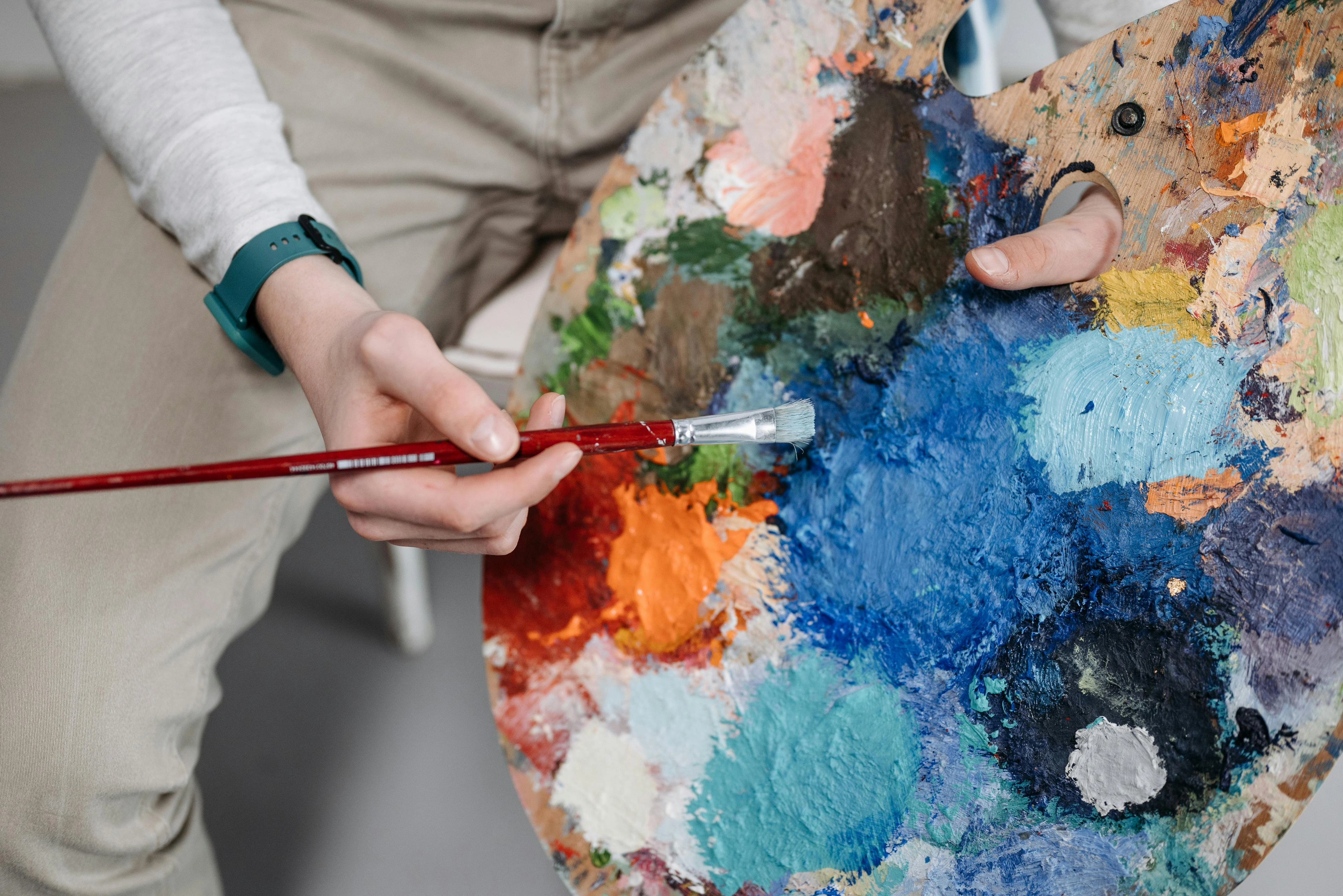
Acrylic vs. Oil vs. Watercolor: The Definitive Artist's Guide
Navigating paint choices? Dive into this comprehensive guide on acrylics, oils, and watercolors. Explore history, unique traits, drying times, surfaces, and expert tips to find your perfect artistic match.
Acrylic vs. Oil vs. Watercolor: The Definitive Artist's Guide
I get it. That feeling of staring at a wall of vibrant paint tubes, pots, and pans, all whispering promises of artistic glory, but mostly just inducing a low-grade panic attack. It’s enough to make you want to grab a crayon and call it a day, right? More than once, I've had a mini-meltdown in the paint aisle, wondering if I'm making the "right" choice. But here’s the secret: there's no single "right" choice, only the right choice for you, right now. And that's exactly what we're going to explore together in this definitive guide. We’ll dive deep into the personality of each paint, exploring their unique quirks, historical journeys, practical applications, and how they truly feel to work with. My aim is to transform your creative process by setting a clear roadmap for your own painting journey, however chaotic it may be. After all, artists throughout my timeline certainly didn't limit themselves to one medium, and neither should you!
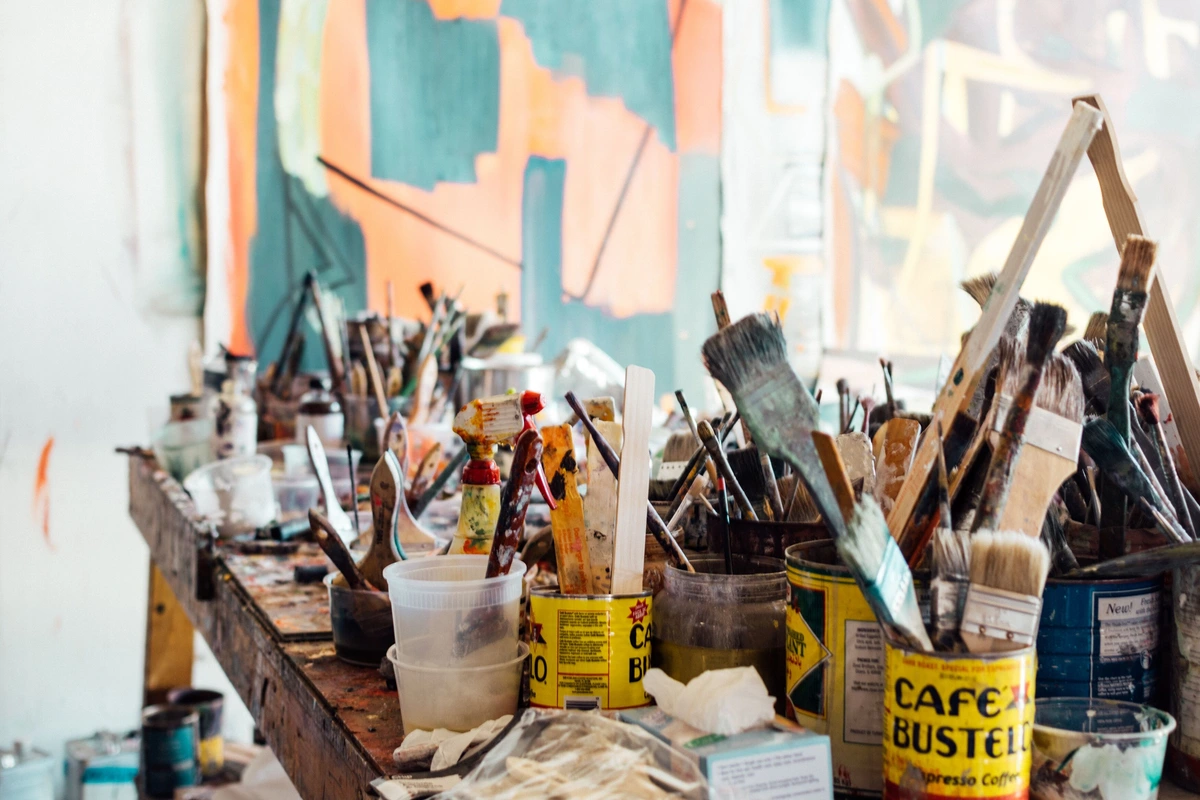
A Quick Hop Through Art History: Why These Paints Matter
Before we get into personal preferences, it’s worth a quick moment to appreciate the deep lineage of these mediums. Understanding where they came from can sometimes shed light on why they behave the way they do and why artists fell in love with them (or cursed them!) throughout my timeline. It’s also fascinating to see how the materials themselves—not just the binders (the substance that holds the pigment particles together and allows them to adhere to a surface), but also the pigments themselves—evolved. We've moved from the humble earth pigments of ancient times to today's brilliant synthetic hues. This constant innovation, from grinding minerals to synthesizing complex organic compounds, continually expanded the artistic palette, offering new possibilities with each era and moving us beyond the limitations and often toxic nature of early options. The story of paint is truly one of relentless discovery.
Acrylics: The Modern Marvel
Acrylic paints are the new kids on the block, relatively speaking. Developed commercially in the mid-20th century, using synthetic polymer binders, they were an undeniable game-changer. Imagine artists like Pollock and Warhol suddenly having a fast-drying, versatile, and durable paint that didn't require toxic solvents! It was revolutionary, allowing for rapid layering and bold, experimental techniques. My own history of acrylic painting journey began with understanding this, and it truly opened my eyes to their unique qualities. The advent of modern synthetic pigments, in particular, allowed for unparalleled vibrancy, consistency, and a newfound lightfastness (fade-resistance). This is a far cry from the limited, often fugitive pigments of earlier eras – pigments that simply couldn't stand the test of time or light, vanishing from artworks over decades and leaving behind ghostly images. Think of the infamous Indian Yellow, once said to be derived from the urine of mango-fed cows and notoriously unstable, or some historical carmines that quickly dulled to murky browns. Modern acrylics largely avoid such heartbreaking disappearances thanks to advanced pigment chemistry, ensuring your art truly lasts.
Oils: The Timeless Master
Oils are the grand dames of the art world. While tempera (pigment mixed with egg yolk) was the dominant medium for centuries, and oils were sometimes used in ancient Egyptian and Roman times for decorative purposes, it was the development of linseed oil as a refined binder in the 15th century, famously championed by artists like Jan van Eyck, that truly transformed painting. This innovation allowed oils to move beyond niche applications and become the cornerstone of European art. Used by masters from the Renaissance onwards, they’ve shaped centuries of artistic expression. Think of the luminous portraits and landscapes of the old masters – that depth, that rich color, that incredible blendability was all thanks to oils. Their slow drying time wasn't a bug; it was a feature, allowing artists to painstakingly refine their work over days or weeks, building intricate glazes and textures. Of course, this also meant grappling with extended drying times, potential yellowing of certain oils over centuries, and the careful management of layers to prevent cracking – challenges that required both skill and patience. The evolution of oil pigments, from medieval mineral-based pigments like lapis lazuli (for ultramarine) and malachite (for green) to more refined and stable compounds developed through the centuries, played a huge role. The 19th century, in particular, saw a boom in new synthetic pigments like cobalt blue and cadmium yellow, further enriching the artist's palette. This ongoing pigment evolution, alongside binder improvements, gave masters like Jan van Eyck his early luminous glazes and Rembrandt his rich, earthy tones and vibrant jewel-like hues we still marvel at today, a far cry from the often toxic and limited historical options like lead white. The sheer tactile luxury of thick oil paint, allowing for glorious impasto (thick application of paint that stands out from the surface), became a hallmark of the medium.
Watercolors: The Ancient Whisper
Watercolors, in some form, have been around for millennia. Imagine ancient Egyptian artists meticulously applying mineral and plant pigments mixed with a binder to papyrus scrolls, or the profound brushwork in East Asian scroll art where ink and watercolor are inseparable. In the West, they gained prominence for intricate work like illuminated manuscripts, detailed scientific illustration (think botanical drawings with incredible precision), landscape studies, and delicate portraits. Here, gum arabic acts as the binder, allowing the pigments to suspend beautifully in water. Their unique transparency and the way they interact with paper create an ethereal quality unlike any other, demanding a delicate hand and an appreciation for spontaneity. Early watercolor pigments were often derived from natural plant and mineral sources, evolving to include a wider range of stable, vibrant hues we see today. Historically, important developments included pigments like Prussian blue (discovered in the early 18th century, a breakthrough for blue tones) and later cobalt blue (early 19th century), significantly broadening the available palette. From ancient mineral and plant sources to these historical innovations and brilliant modern quinacridones, watercolors now offer artists both a broader spectrum and greater longevity than their predecessors, though often relying on careful conservation.
Finding Your Artistic Match: What's Your Vibe?
So, with a little appreciation for their lineage and evolution, let's pivot to the truly important question: what kind of artistic adventure are you looking for? Are you a spontaneous, 'get-it-down-now' kind of person, fueled by immediate impulses? Or do you prefer to luxuriate in the process, slowly building layers and refining details over time? Your innate creative rhythm often dictates which medium will feel like an extension of your hand, and which will feel like wrestling a greased pig (no offense to pigs, or paint). Knowing a bit about their history helps, but ultimately, it comes down to what makes you tick. Let's dive into the nitty-gritty of what makes each of these paints tick, and how they might fit into your own unique artistic rhythm.
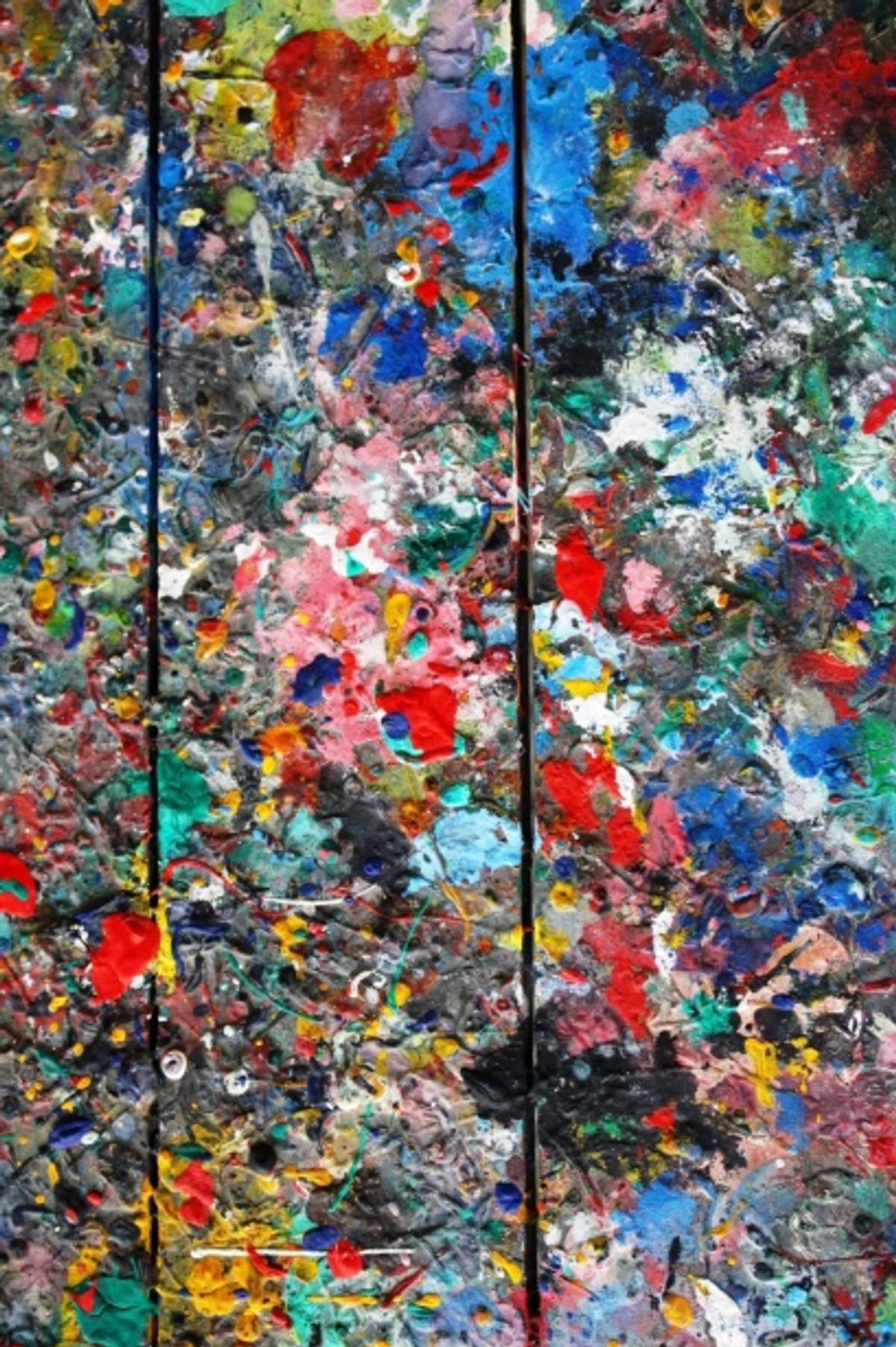
Acrylics: My Speedy, Versatile Friend (and sometimes, my impatient muse)
Ah, acrylics. If you're looking for a medium that keeps pace with a rapidly firing brain – or, let's be honest, a limited attention span – this might be your soulmate. I started my history of acrylic painting journey with them, and for good reason. They dry fast. Like, really fast. You can layer, glaze, and add texture without waiting days for the previous layer to set. This quick turnaround is fantastic for abstract artists, allowing for intuitive, reactive marks and quick decisions. I often find myself building depth with layers, a technique acrylics truly excel at. The tactile feel of acrylics can range from a smooth, flowing liquid to a thick, sculptural paste, depending on what I'm going for. It's often initially wet and creamy, then becomes a flexible, almost plastic-like film as it dries. While incredibly durable and water-resistant once cured, thick acrylic applications can become brittle and prone to cracking if painted on highly flexible, unprimed surfaces without proper mediums – a lesson I learned the hard way on a canvas that was perhaps a little too flimsy for my ambitions at the time. Even on smoother, less porous surfaces like metal or glass, a specific primer might be needed to create enough tooth (a slight texture or grip) for the paint to adhere properly and last. Think of it like a freshly cleaned, smooth window versus a slightly textured wall – paint just grabs better to that subtle roughness. Unlike oils, which build texture directly with paint, acrylics often rely on specialized mediums to achieve significant impasto effects, which is another testament to their versatility. The typical application tools include brushes of various types, from soft synthetic to stiff hog-bristle, and palette knives for direct application or texture building. The dried paint film, once cured, feels like a flexible, somewhat plastic-like skin, retaining a consistent sheen from matte to gloss depending on the medium used.
What I love about acrylics: They're water-soluble, meaning cleanup is a breeze (just soap and water, please and thank you!). They're incredibly versatile, playing nice with all sorts of best acrylic mediums like retarders (which contain additional water or slow-evaporating solvents to keep the paint wet longer) to slow drying, flow improvers (which reduce surface tension, allowing paint to spread more evenly without visible brushstrokes) for smoother washes, or heavy gel mediums to build substantial texture for impasto painting. Mediums can also impact the sheen, ranging from matte to high gloss, giving your finished piece a very different feel. You can paint on almost anything – canvas, paper, wood, even a forgotten dinner plate if you're feeling adventurous (don't recommend that last one for archival purposes, but more on that later!). Plus, they're generally non-toxic, which is a big win if you're clumsy like me and occasionally get paint on your nose. Knowing your basic brushstrokes and having the best acrylic paint brushes really helps. My journey with mixed media often starts with acrylics as a base, simply because they're so cooperative, proving them an excellent starting point for any mixed media explorations.
What sometimes drives me bonkers about acrylics: That fast drying time? It's a double-edged sword. If you're trying to blend colors seamlessly over a large area, you need to work quickly, or use a retarder. I remember one frantic afternoon, trying to blend a smooth gradient across a large canvas for a commission; the edges kept drying before I could get back to them, forcing me into a more textured approach than I'd planned. It turned out great in the end, but boy, did it push me! And sometimes, fresh out of the tube, acrylics can look a bit... flat. But that's where the mediums come in, giving them body, sheen, or transparency. Does that sound like a challenge you're ready to tackle, or does it make your blending hand tremble?
Speaking of archival purposes, while a dinner plate might not be the best canvas, modern artist-grade acrylics are highly archival. They’re made with stable, lightfast pigments and durable polymer binders that resist yellowing, cracking, and fading over time, ensuring your vibrant abstract pieces (like those you might see in my art for sale section) last for centuries when properly cared for. This means using a stable, acid-free substrate like a high-quality canvas or wood panel, and protecting the finished work with a removable varnish to shield it from dirt, UV light, and environmental pollutants. The longevity of artist-grade acrylics stands in stark contrast to student-grade paints, which often contain more fillers and less pigment, leading to less vibrant colors and potentially shorter archival life.
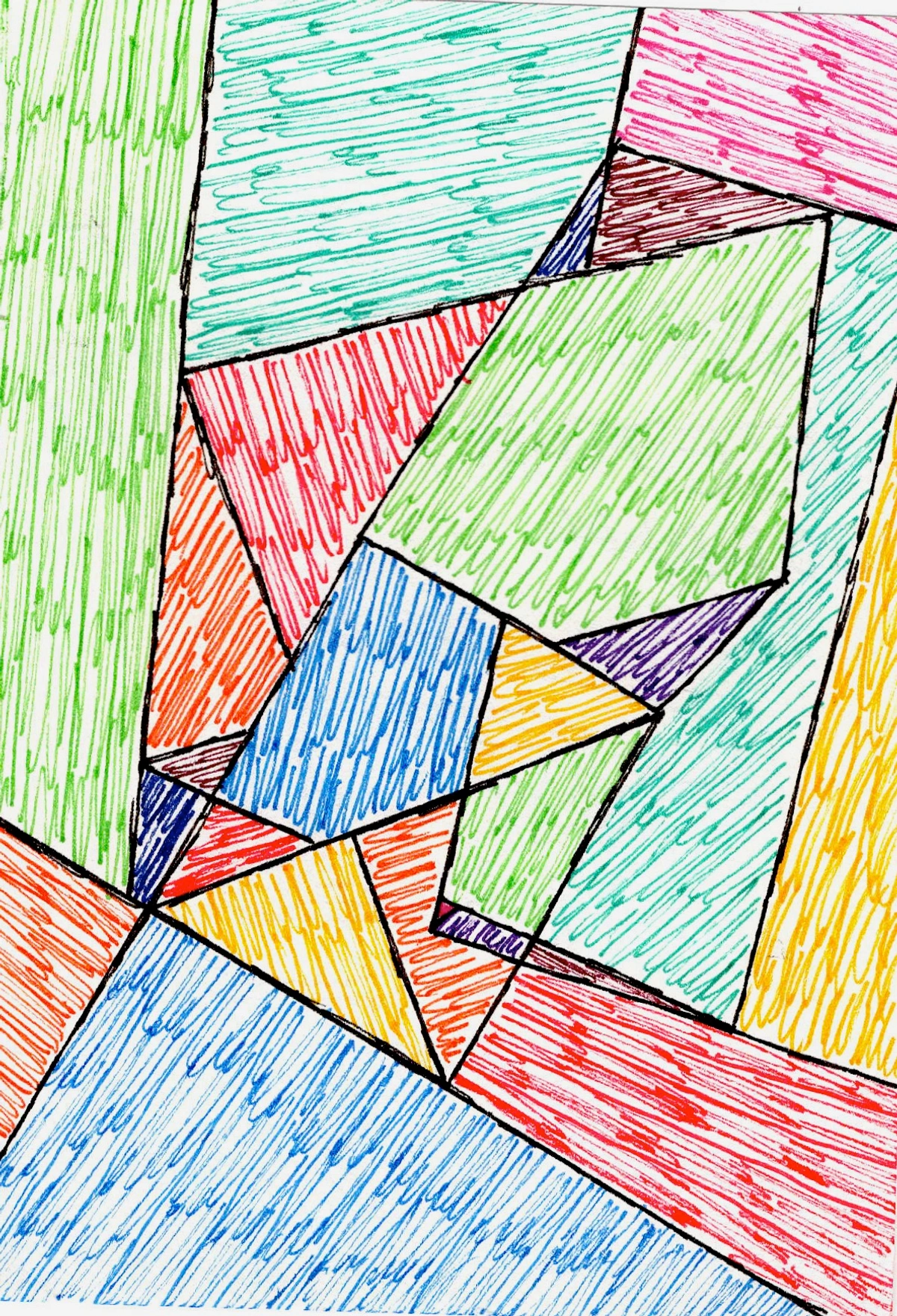
Oils: The Patient Lover (or, for me, the meditative marathon)
Okay, so if acrylics are the spontaneous friend, oils are definitely the thoughtful, slow-burning romance. When I delve into oils, it's a commitment. They dry slowly. And I mean, slowly. This can be anywhere from a few hours to several days, or even weeks for thick layers. At first, this drove me absolutely insane. My impatient brain wanted immediate results. But then I started to appreciate it. That long open time means you can blend colors on the canvas for ages, creating the most exquisite, seamless gradients and subtle shifts in tone. There's a reason oils have been the gold standard for centuries. I remember one landscape I worked on, blending a sunset for what felt like an eternity, only to realize the next morning how truly magical the soft transitions were. This extended working time is ideal for techniques like sfumato, where edges are softened to create smoky transitions, for intricate glazing techniques that build incredible depth, or for wet-on-wet (alla prima) painting, allowing continuous blending to capture fleeting light or complex atmospheric effects. The tactile feel is truly luxurious—a creamy, buttery resistance under the brush that slowly becomes tacky and then firm as it cures, allowing for incredible control and subtle variations in mark-making, easily building up rich impasto layers with the paint itself. While linseed oil is the most common binder today, historically, other oils like walnut oil or poppyseed oil were also used, each offering slightly different drying times and handling characteristics – like walnut oil's slightly faster drying and less yellowing tendency, or poppyseed oil providing a smoother, lighter film, a tiny detail that obsessive artists (like me, sometimes!) find endlessly fascinating. The typical application tools include brushes (often natural hog-bristle for thick applications, softer synthetics for glazing) and palette knives for direct, sculptural application. The dried paint film retains some flexibility and a rich, subtle sheen, though certain oils can exhibit a slight yellowing over many centuries.
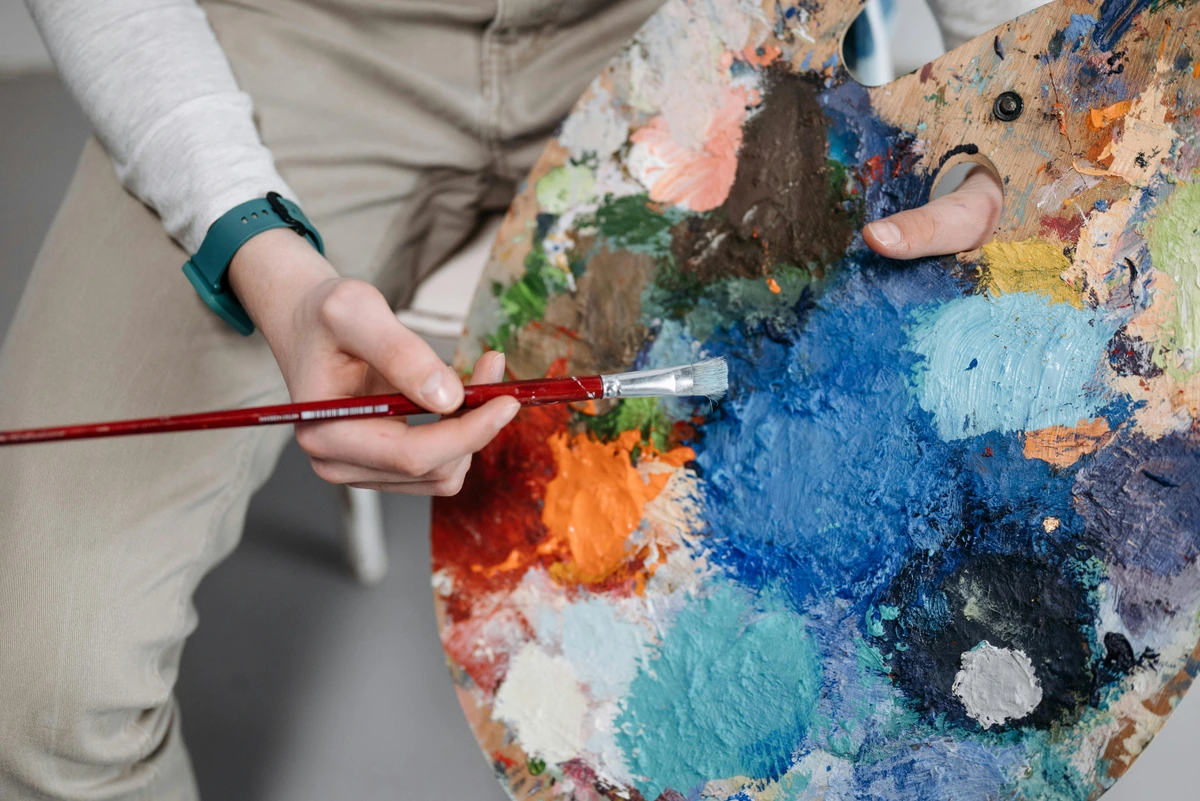
What I love about oils: The richness of color in oils is unparalleled. They feel luxurious, creamy, and have a depth that's truly captivating. You can achieve incredible luminosity and intense saturation. And the ability to continually rework an area, scraping back and refining, is a huge blessing when you're exploring complex compositions. It's like having endless second chances. Oils also work beautifully with various mediums like linseed oil to increase flow and transparency, stand oil (a thicker, polymerized linseed oil that creates a smooth, enamel-like finish due to its high viscosity and leveling properties) for a beautiful, even surface, or even modern alkyd mediums like Liquin to significantly speed up drying time (a lifesaver when my patience wears thin!).
What sometimes drives me bonkers about oils: The drying time, obviously! Waiting for thick layers to dry can feel like watching paint dry... literally. Sometimes I think I could plant a tree, wait for it to grow, and chop it down for firewood before a particularly juicy impasto layer is truly cured. Planning is key. And trust me, the temptation to poke it 'just to see if it's dry' is real, and almost always ends in regret! Also, traditional oil painting involves solvents like turpentine or mineral spirits for thinning and cleanup, which can be a bit stinky and require proper ventilation. (And let's be honest, the whole process can be gloriously, wonderfully messy, often ending with me finding rogue blobs of paint in my hair days later – a small price for such beauty, I guess!) The ongoing cost of these solvents and other specialized mediums can definitely add up over time. And then there's the infamous "fat over lean" rule. It sounds intimidating, like a culinary instruction you're bound to mess up, but it's simply a matter of physics and patience. Think of it like building a multi-layered cake: you wouldn't put a hard, dry layer of frosting on top of a gooey, still-wet cake layer, would you? That's asking for cracks! In oil painting, "fat" paint means it has more oil, making it more flexible and slower to dry. "Lean" paint has less oil (perhaps thinned with solvent) and dries faster, becoming more rigid. The rule dictates that you must always apply layers with more oil (fatter) over layers with less oil (leaner). If you do the opposite – applying "lean over fat" – the faster-drying, rigid top layer will inevitably crack as the slower-drying, more flexible layer beneath it continues to cure. Trust me, the heartbreak of seeing a painting you poured weeks into develop spiderweb cracks is not a journey you want to embark on, and this principle is absolutely crucial for ensuring your artwork's longevity and preventing that kind of structural failure. So, are you ready for the long game, or does that waiting sound like torture?
There are water-mixable oils now, which are a game-changer for many artists, myself included, on days I want to avoid the fumes. They offer much of the same rich qualities as traditional oils but clean up with soap and water, eliminating the need for harsh solvents. It’s a wonderful option if you’re sensitive to smells or working in a smaller space. Still, the results from any oil method can be utterly breathtaking.
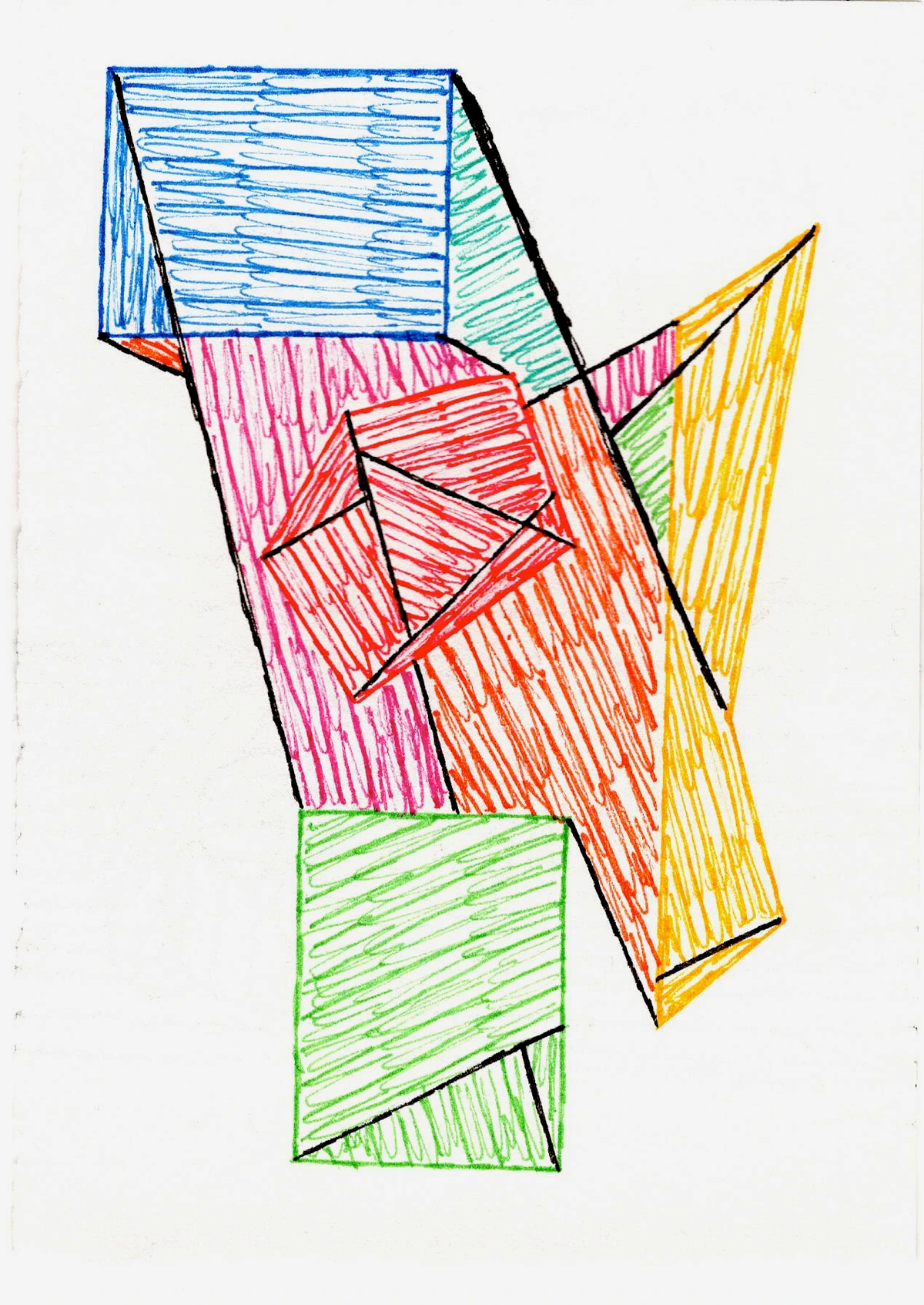
Watercolors: The Delicate Dance (and my lesson in letting go)
Watercolor. Oh, watercolor. This medium taught me a lot about control... and then about letting go of it entirely. It’s all about transparency, luminosity, and the beautiful, unpredictable flow of water. The magic lies in adjusting your water-to-pigment ratio – a tiny bit of water creates intense, saturated color, while more water allows pigments to spread, bloom, and create delicate washes that reveal the paper beneath. Blooming (also known as a "backwash" or "cauliflower effect") occurs when fresh water or a dilute wash is applied to a still-damp wash, pushing the pigment to the edges and creating soft, unpredictable patterns, which I've learned to embrace. Unlike oils and acrylics, which sit on the surface, watercolor pigments stain the paper, allowing the white of the paper to literally light up your colors from beneath. It’s light, it’s airy, it’s deceptively simple, and profoundly challenging. I once tried to replicate a perfect wash from a previous painting, only to find the water had a mind of its own that day, creating something entirely new and, surprisingly, even better – a gorgeous backwash effect that added unexpected depth. It was a beautiful lesson in embracing spontaneity, rather like trying to direct a flock of particularly charming, but independent, birds. The tactile experience of watercolor is light and fluid; the brush glides, and the pigment often seems to have a life of its own as it disperses in water and absorbs into the paper fibers. The dried paint film is essentially stained paper, retaining its matte, airy quality. What makes it "unforgiving" is that once those delicate washes dry, lifting the pigment to correct a mistake is incredibly difficult, often leaving behind a ghostly stain or damaging the paper surface. Overworking an area can quickly lead to muddy, dull colors, losing that coveted transparency. I still remember the time I tried to "fix" a perfectly decent sky by adding one too many layers, only to end up with a murky, bruised-looking mess I had to scrap. Live and learn, right? And forget about creating thick impasto effects; watercolor is truly a flat medium, relying on layers and flow for depth. The typical application tools are various types of brushes (often soft natural hair or synthetic blends), but artists also use sponges, spray bottles, and even their fingers to manipulate the paint.
What I love about watercolors: The ethereal quality. The way colors bloom and blend on wet paper is pure magic. It's incredibly portable – a small pan set and a brush are all you need for a quick sketch or study. There’s an intimacy to working with watercolor, a delicate dance between pigment and water that creates unique, often unrepeatable effects. It's fantastic for capturing quick impressions or for artists who love subtlety and soft edges. For beginners, getting the essential watercolor supplies is a great first step. You can also experiment with ox gall to improve flow, or gum arabic as an additive to increase gloss and transparency, or use masking fluid for crisp white highlights.
What sometimes drives me bonkers about watercolors: It’s incredibly unforgiving, as I mentioned. This medium is also highly dependent on your surface, and choosing the right paper can feel like a whole other art form! The texture or tooth of the paper is paramount, affecting how the pigment settles and spreads. Here's a quick rundown of how different textures interact with your paint:
- Cold Press Paper: This has a textured surface that grabs pigment and water, leading to beautiful granulation (where pigments separate and create speckled patterns, often visible as tiny flecks of color in a wash) and a slightly diffused look. It's fantastic for textural work but can make fine details tricky.
- Hot Press Paper: On the other hand, this is smooth, ideal for fine details, crisp lines, and even washes. The smooth surface allows for sharp edges and vibrant, unbroken color, making it perfect for botanical illustration or precise ink work.
- Rough Paper: This offers a very distinct, heavily textured surface that can add unique character to your washes, creating dramatic variations in tone and highly visible granulation. It’s glorious for expressive landscapes but can be very challenging for precise brushwork. Paper quality and its specific texture are paramount, and the ongoing cost of high-quality, acid-free watercolor paper can be significant. Paper can buckle if too much water is used, and those accidental drips... well, sometimes they're happy accidents, sometimes they're just drips that ruin your meticulously planned wash. It's a true lesson in embracing imperfection. Are you someone who thrives on precision, or can you find joy in the unpredictable flow of water?
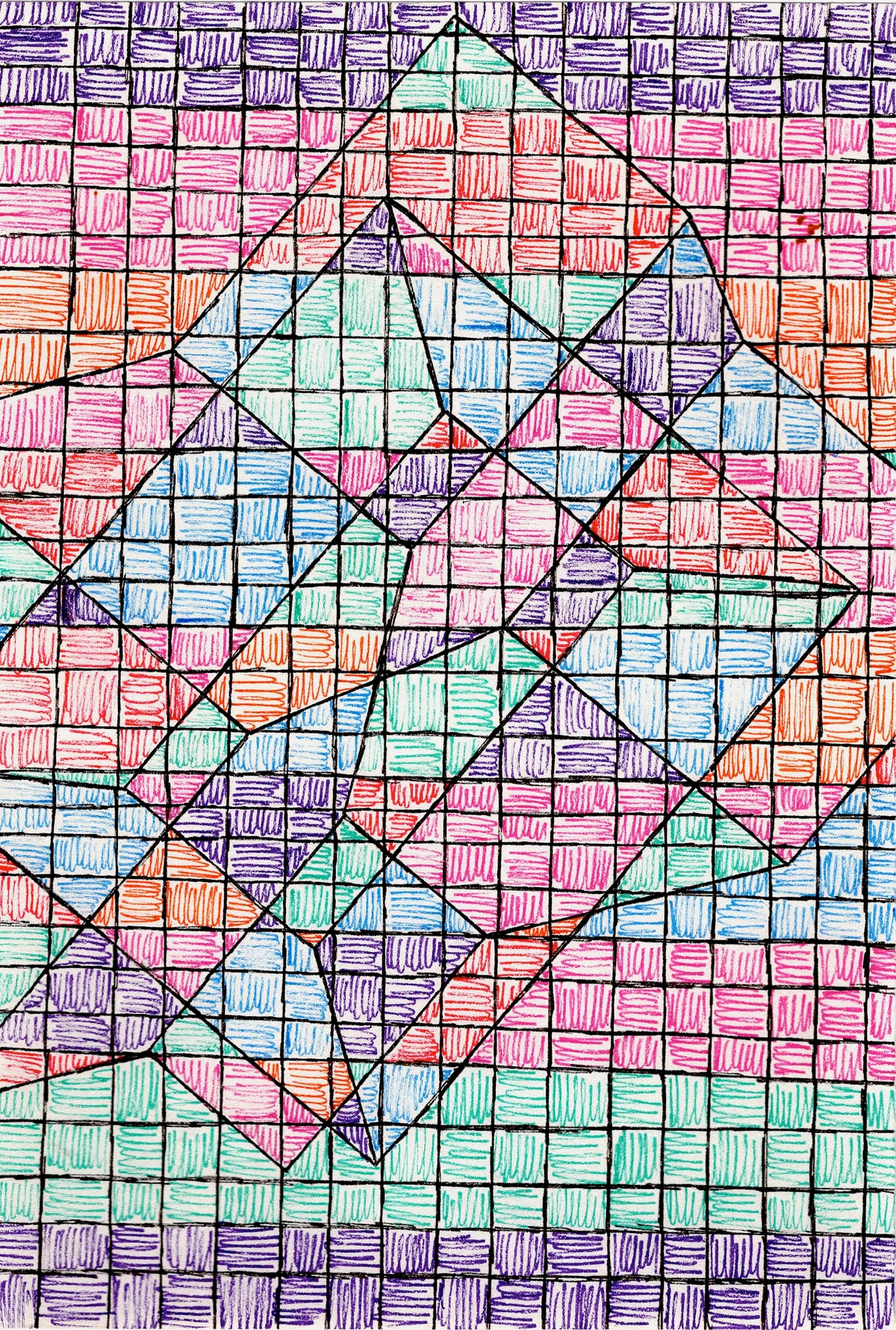
Understanding Your Paint: Pigment Load, Quality, and Archival Care
Before we dive into the comparison table, let's talk about a few fundamental concepts that dictate not just how your paint performs, but how long your art will last. This is crucial whether you're creating pieces for your own enjoyment or aiming for something truly archival.
First, pigment load. This refers to the concentration of pigment within the binder – the vehicle that holds the pigment and allows it to adhere to a surface. For acrylics, this is a synthetic polymer emulsion; for oils, it's a drying oil (like linseed); and for watercolors, it's gum arabic. Artist-grade paints, regardless of medium, boast a higher pigment load – often 2-3 times more concentrated than their student-grade counterparts. What does this mean for you? Brighter, more intense colors that go further, better lightfastness (they won't fade as quickly), and a richer, more vibrant result that feels more substantial and performs predictably. Student-grade paints, by contrast, contain more fillers (like chalk or clay) and less pigment, making them more affordable but resulting in duller, less vibrant colors and reduced longevity, impacting the overall archival quality of your artwork. Mediums can also impact the sheen of the finished paint, from matte to satin to glossy, allowing for further artistic control and expression. For watercolors, this often means concentrated pigments available in vibrant tubes or rich, re-wettable pans, whereas student-grade versions are typically found in more diluted pan sets with less pigment and more fillers. While a higher pigment load often means a higher price, it's an investment in the vibrancy, performance, and archival quality of your artwork.
A quick thought on sustainability, too: The choices we make about our art materials can have an impact. Oils traditionally involve solvents, raising questions about responsible disposal, and some historical pigments like cadmium or lead white were highly toxic – and sadly, some remain in use, though artists are increasingly conscious of these choices. Acrylics, being plastic-based, pose concerns about microplastic waste, although many brands are developing more eco-friendly options. Watercolors, generally, are considered among the more environmentally benign options due to their water-soluble nature and fewer synthetic components. It’s worth keeping this in mind as you embark on your artistic journey and seek materials that align with your values.
Why Priming and Acid-Free Materials Matter for Longevity
Speaking of preparation, let's talk about priming and the importance of acid-free materials. For both acrylics and oils, especially on porous surfaces like canvas or wood, priming is a non-negotiable step for archival work. A primer, often gesso (which can be acrylic or oil-based), creates an even, slightly absorbent surface for your paint to adhere to, preventing it from soaking unevenly into the support. More critically, for oils, gesso acts as a vital barrier, preventing the corrosive oil from being absorbed directly into the canvas fibers, which can cause the canvas to rot over time. For acrylics, while less corrosive, a primed surface ensures better adhesion and prevents the paint from becoming brittle or cracking on flexible supports.
Beyond priming, ensuring all your materials are acid-free is crucial across the board, from your canvas and wood panels to your paper (especially for watercolors!). Acidic materials degrade over time, causing discoloration, brittleness, and eventual destruction of your artwork. It's a simple step that adds significant structural integrity and longevity to your finished piece, ensuring it lasts for generations – a legacy, if you will, that extends beyond your timeline.
With these fundamentals in mind, let's look at how these characteristics translate into the practicalities of painting with each medium.
So, How Do I Choose? A No-Nonsense (and Totally Subjective) Guide
Alright, now that I've rambled a bit about my personal experiences and the deep technicalities of paint, let's try to put some structure around this decision. When you're standing there, paintbrush in hand (or perhaps still in the store, overwhelmed by the sheer number of options), here are a few things I'd tell you to consider:
Feature | Acrylics | Oils | Watercolors |
|---|---|---|---|
| Drying Time | Fast (minutes to hours) | Slow (hours to weeks) | Fast (minutes), can re-wet |
| Cleanup | Water and soap | Solvents (or water-mixable options) | Water |
| Versatility | High (thick, thin, mixed media explorations) | High (rich layers, glazing techniques, impasto painting) | Moderate (transparency, washes, limited texture) |
| Opacity/Light | Opaque (can be thinned for transparency) | Opaque (can be thinned for transparency) | Transparent (luminosity from paper) |
| Toxicity/Fumes | Low/Non-toxic | Medium-High (traditional solvents), Low (water-mixable) | Low/Non-toxic |
| For Beginners? | Excellent (forgiving, easy cleanup) | Good (requires patience & ventilation) | Challenging (less forgiving of mistakes) |
| Portability | Moderate (tubes, sometimes bulky mediums) | Low (tubes, solvents, longer drying) | High (pan sets, water brush) |
| Cost | Mid-range initial, good value | Higher initial, ongoing solvent/medium costs | Mid-range initial, specialized paper adds to cost |
Consider Your Artistic Goals:
- Speed & Experimentation: If you love working quickly, layering, and want something that dries fast so you can keep going, or if you're keen on mixed media explorations, acrylics are probably your jam. Best for rapid studies, bold abstract pieces, or multi-layered textures.
- Blending & Depth: If you crave rich, seamless color transitions, value the ability to rework an area for an extended period, and want that classic, luminous quality, oils are worth the investment of time and patience. Ideal for realistic portraits, intricate landscapes, or complex compositions with deep glazes.
- Lightness & Spontaneity: If you're drawn to delicate, translucent effects, prefer portability, and enjoy the unpredictable magic of water, watercolors will speak to your soul. But be ready to embrace happy accidents. Perfect for quick sketches, ethereal landscapes, botanical illustrations, or capturing fleeting moments on the go.
FAQs: Burning Questions from Fellow Paint-Curious Souls
Q: What's the absolute best paint for beginners?
A: In my humble opinion, acrylics. They're forgiving, clean up easily with water, and dry quickly, so you can learn layering without waiting forever. Plus, they're relatively inexpensive to start with, especially compared to the initial setup costs of oils or specialized watercolor paper. Water-mixable oils are a close second if you're patient!
Q: Can I mix acrylics and oils?
A: Oh, this is a big one! Generally, no, not directly. Acrylics are water-based and cure by evaporation, forming a flexible, somewhat plastic-like film. Oils, on the other hand, are oil-based and cure by oxidation (chemically reacting with oxygen in the air), forming a rigid film over time. These fundamentally different chemical binders simply don't play well together, leading to potential adhesion issues, cracking, or delamination over time. Think of it like trying to get oil and water to permanently mix – they just inherently repel each other! While you can paint acrylics over fully cured oil paint (though some artists still advise against it due to potential issues over very long periods), you should never paint oils over acrylics. Why? Because acrylics dry to a somewhat flexible, non-porous plastic film. Oil paint, which dries by oxidation, needs to absorb into a somewhat porous surface to create a strong mechanical bond. If oil paint sits on a non-porous acrylic layer, it's essentially just clinging to the surface without a proper mechanical bond, and over time, it will likely delaminate, crack, or peel off. This foundational principle is crucial for ensuring the structural integrity and longevity of your artwork. The old adage "fat over lean" specifically applies to layering oil paints, ensuring each subsequent oil layer has more oil than the one beneath it for flexibility.
Q: Which medium is most archival?
A: When properly handled and applied using artist-grade materials on acid-free substrates, both oils and acrylics are incredibly archival and durable, lasting for centuries. This means using lightfast pigments (pigments that resist fading and color shift when exposed to light over time), high-quality canvases or panels, and appropriate varnishing (a removable layer to protect against dirt, UV radiation, and atmospheric pollutants). Watercolors, while beautiful, are more delicate. Even with professional-grade pigments and acid-free paper, they can be more susceptible to fading if not protected from direct sunlight. Proper framing under UV-protective glass (which filters out harmful ultraviolet rays) significantly extends their life. Ultimately, the artist's technique, the quality of materials, and environmental protection are crucial for the longevity of any artwork, regardless of medium.
Q: What are the best surfaces for each medium?
A: This is a great question, as the surface plays a huge role!
- Acrylics are incredibly versatile. For serious, archival work, you'll primarily use acid-free canvas (stretched or panel) or acid-free wood panels, always properly primed with gesso. However, their versatility means you can also paint on thick, acid-free watercolor or mixed media paper, fabric, and even non-traditional surfaces like metal or glass – provided these are correctly primed with a specialized primer to ensure optimal adhesion and longevity. A good primer creates the necessary tooth (a slight texture or grip) for the paint to adhere properly.
- Oils traditionally require a prepared, acid-free surface. Canvas (stretched or panel) is most common, often primed with gesso (which can be traditional oil-based gesso or acrylic gesso). This gesso isn't just for texture; it's a vital barrier, preventing the corrosive oil from being absorbed directly into the canvas fibers, which can cause the canvas to rot over time. Wood panels are also excellent, offering a rigid support. Historically, fine linens and copper were also used, offering different textural and archival qualities.
- Watercolors demand specialized acid-free watercolor paper (ranging from 140 lb/300 gsm upwards) because it's designed to withstand water without buckling and to allow the pigment to spread beautifully without bleeding through. As discussed earlier, cold press (textured for granulation), hot press (smooth for fine details), and rough (heavily textured for dramatic washes) papers offer different textures for varied effects. The ongoing cost of high-quality, acid-free watercolor paper can be significant, but it's crucial for the integrity of your work.
Conclusion: Just Start Painting, Okay?
Honestly? My "favorite" medium often changes with my mood, or the project I'm working on. Sometimes I need the immediate gratification and bold statements of acrylics, especially for large abstract pieces you might see in my art for sale section. Other times, I crave the meditative rhythm of oils, allowing me to delve deep into color and light. And then there are those moments when only the soft, flowing nature of watercolor will do for a quick study or a moment of pure, unadulterated release. There was one time I was absolutely stumped on an acrylic piece, feeling blocked and frustrated, so I just grabbed my travel watercolor set and sketched for an hour. That shift in pace and medium completely reset my perspective, and I came back to the acrylics with fresh eyes. This experience, and countless others, has shown me that the choice isn't about finding the perfect medium, but about finding the perfect medium for that moment, for that feeling, or for that specific creative challenge. And hey, if you find yourself falling for the subtle textures of gouache (an opaque watercolor often used alongside traditional watercolors) or the expressive lines of pastels, that's just another wonderful chapter in your artistic story!
The biggest hurdle for any artist, beginner or seasoned, isn't finding the "perfect" medium. It's overcoming the blank canvas. The truth is, artists throughout my timeline have switched, blended, and experimented with mediums. Picasso, for instance, famously moved through various mediums and styles – from his Blue Period oils to Cubist collages – never limiting his creative expression! And think of Leonardo da Vinci, who seamlessly incorporated various drawing mediums, tempera, and oils across his vast body of work. The beauty of art is that there are no hard and fast rules. So, remember: acrylics are your fast, versatile friend; oils, your patient, rich companion; and watercolors, your delicate, spontaneous dance partner. Try them all! See what resonates. You might find you love two, or even all three for different purposes. Don't let the choice paralyze you. The important thing is to just start painting. Happy painting!




